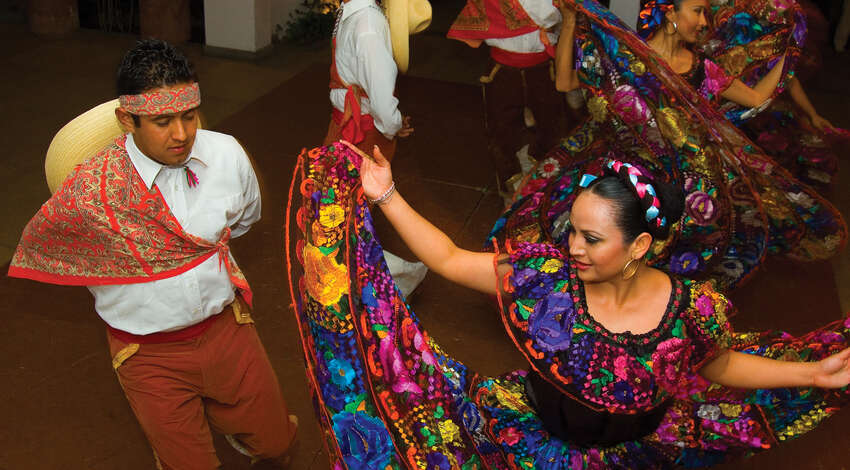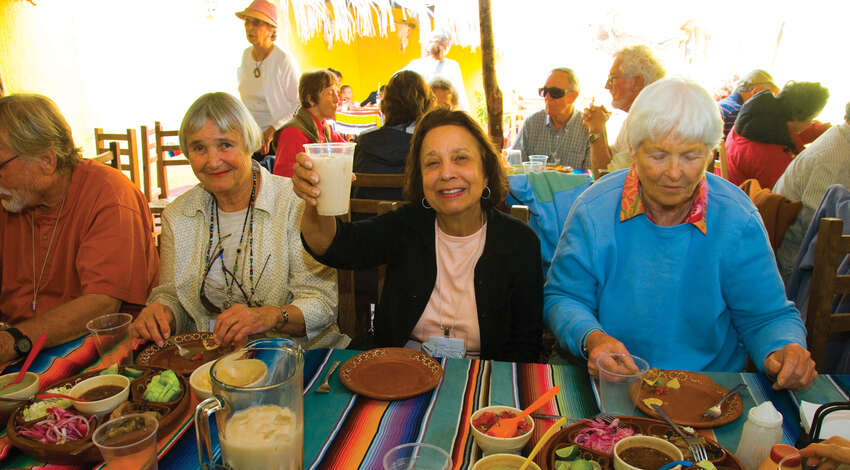Cinco de Mayo Celebrates … What, Exactly?
The thought that springs to mind for most Americans when Cinco de Mayo is brought up is, “Oh, that’s Mexico’s Independence Day.”
Except it isn’t. It’s actually the commemoration of the Mexican victory at the Battle of Puebla.
“Ah,” one might think, “over the Spanish.”
No.
“Over the U.S.?”
Wrong again.

Mexican folkloric dancers
The victory actually came over the French, in 1862, and it’s fair to say most people don’t even know the two countries were in conflict. But they were — and is so often the case, the root cause was money.
In 1861, following two costly wars in just over a decade, Mexico was nearly bankrupt, so in July of that year President Benito Juárez announced that Mexico would suspend foreign debt payments for two years.
This did not sit well with Mexico’s creditors, in particular Spain, the United Kingdom and France, all of whom promptly sent naval forces to demand payment.
France, led at the time by Napoleon III, went a step further, deciding to establish an empire there. Spain and the U.K. peacefully withdrew, and the French fleet attacked. Making their way ashore, they marched on Mexico City, only to be met at Puebla by a Mexican force whom they outnumbered two to one. The poorly equipped but valiant Mexican forces defeated the French decisively on May 5, 1862 — Cinco de Mayo.
And thus, Mexico was free of French rule, yes?

Participants in Mexico having a meal
Well, no. The battle was only the first Battle of Puebla. In the rematch, things didn’t go so well for the Mexicans. In the Second Battle of Puebla, 30,000 French troops overwhelmed the Mexican army and captured Mexico City. They installed as emperor there Maximilian I, an Austrian archduke who most recently had been Viceroy of Lombardy-Venetia in Italy, and who was descended from Charles V, the Holy Roman emperor who ruled Spain in the 1500s when it first conquered the Aztecs and made Mexico part of its empire.
And how did things go for the Austrian who had previously been a ruler in Italy who was sent by the French to rule in Mexico as his ancestor the King of Spain once had? Also not so well. As the American Civil War ended in 1865, the United States began providing more support to Mexican guerillas. Facing a hostile U.S. and the threat of war at home with Prussia, Napoleon III decided to withdraw. Maximilian unwisely did not and was captured and executed.
Benito Juárez returned to Mexico City and established a new government. One of his first orders of business was to declare May 5 — “Battle of Puebla Day” or “Battle of Cinco de Mayo” — a national holiday.
Today, Cinco de Mayo is celebrated more in the United States than it is in Mexico. In fact, it is no longer even an official Mexican holiday (except in the State of Puebla and nearby Veracruz), although schools are closed nationwide.

A Catholic church in Puebla, Mexico
In the U.S., Cinco de Mayo was first celebrated in 1863 by Mexican miners in the town of Columbia, Calif., rejoicing at the news of the victory. It wasn’t until nearly a century later that the observation began to take hold in the rest of the U.S., spurred in part by the blossoming of the Chicano movement in the 1950s and 1960s.
And then, in the 1980s, marketers got hold of it. Snack makers, alcohol manufacturers and others involved in the commerce of celebration — always in search of a good party — began to promote Cinco de Mayo in earnest. But along with the revenue their efforts generated came a broader appreciation for Mexican culture and a deeper awareness of the contributions of Mexican Americans to U.S. society, certainly a happy accident.
Today there are hundreds of Cinco de Mayo celebrations throughout the U.S. A Congressional declaration in 2005 encouraged Americans to observe the day, and programs highlighting Mexican culture are a fixture in schools each May. As for the marketers, they have their own cause for celebration: Beer sales for Cinco de Mayo outpace both the Super Bowl and St. Patrick’s Day.
All that said, while Cinco de Mayo isn’t a day to celebrate Mexican independence, it is a day to celebrate our neighbors to the south, and the impact they have had on the world.
If you’re of a mind to celebrate Mexico’s actual Independence Day, it’s Sept. 16, the day on which, in 1810, priest Miguel Hidalgo y Castillo urged Mexicans to rebel against the Spanish, marking the start of a decade-long struggle that would finally result in independence in 1821. And if you’re looking to celebrate Mexican culture generally, why not go to the source? Road Scholar offers dozens of learning adventures in The Land of the Sun!
Happy Cinco de Mayo!
